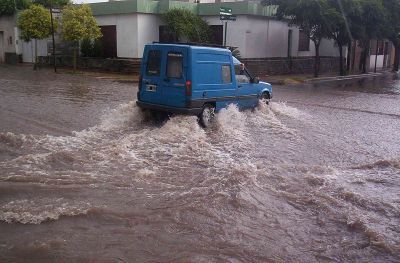The project, which was launched in October 2012, reverses the notion
that potential threat warnings should trickle down from authorities to
those living in areas at risk. Indeed, it aims to strengthen Europe’s
response to water management by directly engaging with those who live on
the front line. Citizens – such as volunteer flood wardens in the UK or
civil protection volunteers in Italy – are encouraged to help by taking
measurements using new specially designed mobile apps, and sending
information and images by phone to the relevant authorities.
WESENSEIT, which ends in September 2016, is currently running tests
in Italy, the Netherlands and the UK. In Italy for example, an
evaluation involving some 500 volunteers simulating a flood in the city
of Vicenza was completed at the end of March 2014.
The project, which is funded under the FP7 programme, takes full
advantage of the untapped possibilities that mobile phones and social
media offer, and enables citizens to be fully active in capturing,
evaluating and communicating valuable information on water levels. This
should help to create cost efficiencies for over-stretched local
authorities and act as early warning systems. The project should also
create business opportunities for budding app developers, who will be
able to develop and test their innovations within the solid
infrastructure that the project is creating – and help to make a
positive difference to the lives of local people.
Other recent EU-funded projects have also focused on innovative
means of flood management and prevention. The IMPRINTS project, for
example, developed an early warning platform to cut responses to flash
floods down to about two hours, and even less – potentially giving
people more time to get out of harm’s way.
The IMPRINTS platform is based on better rainfall predictions, using
meteorological models and weather radar networks. The project has been
an important success, with water services and hydro-meteorological
operations in Spain, Switzerland and France now using the project’s
innovations to refine their own real-time forecasting systems.
Similarly, the URBANFLOOD project developed sensors to monitor flood
embankments and provide an early warning of their risk of failing. The
underground sensors detect any changes in water levels, along with other
factors such as temperature, moisture and earth movements that can lead
eventually to flooding. The information is then assessed by the
project’s modelling software, which can trigger an alert if there is a
problem.
Taken together, these three projects underline the importance that
the EU places on flood prevention. Recent events in England, central
Europe and elsewhere have served to remind us of the human and economic
costs of flooding. The number of people who will be affected is
predicted to double over the next 70 years, with annual damages
increasing from EUR 7.7bn to EUR 15bn.
For more information, please visit:
WESENSEIT
www.wesenseit.eu
Project factsheet:
http://cordis.europa.eu/project/rcn/106532_en.html

